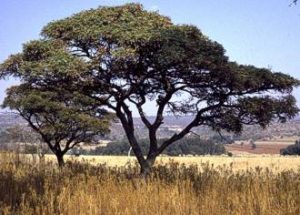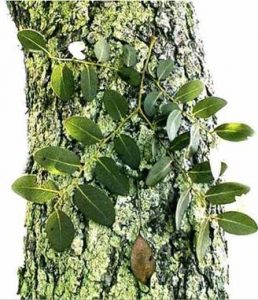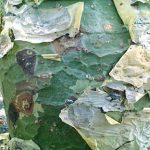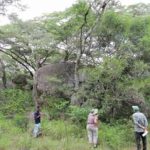TREE LIFE
February 2013
MASHONALAND CALENDAR
Tuesday February 5th: Botanic Gardens walk with Tom Muller. Meet at 4.45pm in the car park of the Botanic Gardens.
Sunday February 17th: Chedgelow Farm. Meet at 9.30am.
Saturday 23 February: Outing to Rhett Butler’s Fawlty Towers. Meet at 2.30pm.
THE TREE SOCIETY’s NEW SECRETARY
The Committee of the Tree Society would like to welcome Teig Howson to it’s midst. Teig has kindly agreed to take on the role of Secretary. We hope you will enjoy your time with us.
– Ed
Art Talk by Mr M Pearce @ Hellenic Academy, 7 February
Hellenic is pleased to announce that the first Art Talk of 2013 will be given by Mr Mick Pearce, the well known local architect who will be talking on the subject of Bio-mimicry. This is a process of design directly inspired by processes in nature. For instance you will have seen the Eastgate building in down town Harare, the architectural design was inspired by a termite nest. Mick will attempt to explain the process of Bio-mimicry with pictures of this and other buildings that he has designed in China and Australia as well as here in Zimbabwe.
Mick is just back from working in China where he was employed by the largest developer of cities in the world, China Vanke Ltd, as an architectural adviser on designing for climate change. This will be a highly popular and interesting talk.
Thursday, 7th February, at 5.30 in the Art Room. Hellenic Academy, 42-26 Basset Crescent, New Alexandra Park, Harare. Refreshments will be served. No tickets required (voluntary donation on door).
OBITUARY: LADY MARGARET TREDGOLD 1910 – 2012
Lady Margaret Helen Tredgold (nee Baines) was born 102 years ago in Kimberley, South Africa, into a family of 7 children. She qualified as an art teacher at Grahamstown Training College and taught history and art at schools in Johannesburg and East London. She became a citizen of Rhodesia when she married Advocate W.H. (Bill) Phear in Bulawayo, later moving to Marandellas, now Marondera. They had three children, Shirley, Patrick and Stephen.
In 1974, when both of them had been widowed, Margaret married the Rt Hon. Sir Robert Tredgold. She moved to England in 2004 to be close to her family and passed away on 31 October 2012 in IL minster.
Margaret developed a deep and lasting love for this country and in particular it’s flora. Her first book “Wild Flowers of Rhodesia” was published in 1953 by the National Museums and Monuments with funds from the Thomas Meikle Trust. This book was later updated and re-published in 1979.
In 1995 I had the pleasure of meeting Margaret and working with her on a revision of the book, now entitled “Zimbabwe’s Wild Flowers” which was published in 1996 by the National Museums and Monuments. Unfortunately the reproductions of her wild flower paintings in the book do not do justice to the originals – which is a great pity as she was a skilled observer and artist.
Her art and enthusiasm for the natural history and people of this country are also reflected in her other books: Food Plants of Zimbabwe; The Comical Adventures of Kalulu the Hare; A Series of Folk Tales of Africa and four children’s books.
Margaret was a delightful person and a true lady.
– Susan Childes
TREE OF THE MONTH
Burkea africana
Family Fabaceaeae, sub-family Caesalpinioideae, the Cassia and Brachystegia family.
Botanical names: Burkea africana. Common names: Burkea, Wild Seringa, False Ash ; Nd: Umnondo ; Sh: Mukarati.

Burkea africana
The genus Fabaceae or, using the more descriptive name, the Leguminosae, is a huge group that contains virtually all plants that bear legumes, i.e. a bean shaped fruit. The family is so large that it has been sub-divided in three : the Mimosoideae : flowers have reduced or no petals (mimosa-like); the Papilionoideae : flowers the shape of a butterfly (papillion in French) and the Caesalpinioideae : petals seldom absent and often showy.
Burkea africana is named after Joseph Burke, a botanist who collected plants in South Africa. The tree is medium-sized, around 8 to 10m tall and grows in a wide range of habitats, though less frequent in miombo woodlands.

Burkea africana bark
The bark is dark grey, rough and flaking, sometimes with a very thin, pale green layer of lichen on the surface, looking like a wash of pale green paint. The ends of the branches have stubby, rusty-red to maroon, densely velvety growing tips.
The leaves are bi-pinnate, the leaflets being alternate, with 5 to 9 leaflets on each pinna. The leaflets are elliptic, 3 to 6 cm long by 1 to 5 cm wide, grey-green to dark green, with silvery appressed hairs when very young, losing these later. The leaflet apex is rounded and notched while the base is slightly asymmetric. The margin is entire and the petiole can be 4-10 cm long. There are 2 or 3 pairs of pinnae crowded at the ends of the branchlets.
The trees are monoecious (both sexes on the same tree) and hermaphroditic (both sexes in the same flower). The tree flowers from September to November, the flowers generally appearing before the new leaves. The flowers are creamy white, about 5 mm in diameter, in long pendulous spikes of up to 24cm long, crowded near the ends of the branchlets.
The fruit is a thin, flat pod, about 8 x 2,5 cm, pale brown, indehiscent, hanging in conspicuous clusters from the ends of the branches from February to July. These remain on the tree for months until after the leaves have fallen at the end of the season.
These trees should not be confused with Albizia antunesiana, which has very asymmetric, opposite leaflets or with Erythrophleum africanum which has much more rounded leaves. The velvety tips of the branchlets of B. africana are diagnostic.
The wood is hard, heavy and tough, varying in colour from pale yellow to reddish brown. It has an attractive lustre but is liable to borer attack if untreated.
The Shona call the species mukarati, which means “the tree with caterpillars”. The leaves are the only food resource of two kinds of edible caterpillar that are harvested in thousands during the rainy season, mainly in January and February (amacimbi). The bark is used to dye fibre to be woven into baskets, such as that from Combretum zeyheri roots.
Burkea africana roots are used to treat stomach pain and toothache. For both treatments the outer skin of the roots is scraped away, the roots are cut into pieces of about 50 mm long and are boiled for 5 to 10 minutes. The warm liquid is then swilled in the mouth around the aching tooth three times a day for about 3 minutes and then spat out. Used for stomach pain, the infusion has to be cooled down and 3 cups a day are taken. The bark of Burkea africana is also used medicinally in large areas of sub-Saharan Africa. Apart from tannin, the constituents responsible for its supposed activity are not well known.
Source: Wikipedia.
– JP Felu
OUTING TO BALLY VAUGHAN Sunday January 20
The first outing of the year 2013 was to Bally Vaughan and produced some interesting trees. From my perspective as leader there was lots to talk about and lots of other interest in the form of the animals to entertain everyone.
Bally Vaughan is a refuge for wild animals. Delightful were the Banded Mongoose, a gregarious diurnal species which were running around all over the place. Never before have I stood completely relaxed talking about trees and listening to lion roaring very close by. As we wandered around the place looking at the trees we were able to see all sorts of animals, not usually part of a Tree Society outing.
The Society has been to Bally Vaughan before and we had a list of what they recorded on that occasion. I divided the list into trees and other plants but in retrospect there were a couple of trees, aliens of course, which I had left on the ‘other plants’ list. These include Gmelina arborea, a tree very widely planted in Malawi and occasionally seen in Zimbabwe. I think it was next to the fence along the main entrance road, which I spotted as we were on our way back for lunch. The other is the Mexican apple whose name Casimiroa edulis I didn’t pick up as being a tree when preparing the lists.
In addition to the 14 trees on the list which we saw we added another 20. The first of course was the Msasa, Brachystegia spiciformis, which being so common is often missed. This particular one had brilliantly conspicuous stipels or ‘little lumps’ on the rachis between the pairs of leaflets which is one of the ‘labels’ for those trees, not always as legible as these were. A few trees later we found a Julbernardia globiflora, without the tell-tale pods like a halo of little flags over the top, but still with its other labels, a fine fringe of hairs around the margin of the leaflets resulting in a yellow rim and a very velvety rachis.
These trees were both above where we parked the cars. Also there was the velvet-leaf, Tapiphyllum velutinum, in flower, perhaps taller and more slender than we usually see them. These belong to Rubiaceae, the Gardenia and Coffee family, and before I spotted that, we had seen another Rubiaceae, Vangueria infausta, the wild-medlar, in young green fruit, a few of which had the characteristic apical tip off-centre.
Also in that area was Combretum collinum, the variable combretum. At the time I could not remember which subspecies it was but the leaves did have a dense mat of greyish white hairs so it must have subsp. gazense. Combretum molle, the velvet-leaved combretum with its large leaves, soft enough debatably to be suitable as a substitute for toilet paper. Later on was Combretum zeyheri, with large pods to prove the identity. The pods were in the process of turning from green to brown and were very attractively two-tone.
Three fig trees came to our attention, Ficus burkei, Ficus sycomorus and Ficus sur. The first, the common wild fig, identifiable with leaves with only a single midrib, whereas the others had more than one vein starting from the base. The sycomore fig had rough almost sandpaper-like leaves which distinguished it from the Ficus sur, the broom-cluster fig which had smooth leaves and which did have the a tell-tale small cluster of figs on the trunk. Ficus sycomorus, is the sycomore of the Bible, the one which Zacchius climbed. This is spelt sycomore with an ‘o’ and is quite different from the sycamores, spelt with an ‘a’, of Europe which in turn are different from the sycamores of America.
Faurea saligna, willow-leaved beechwood and Faurea rochetiana, (previously [speciosa]) broad-leaved beechwood, were both in catkin. The leaves have fine lateral veins which run all the way to the margin and join up to form a submarginal vein (a vein all the way around just inside the margin).
People have been heard to ask why the Tree Society only looks at small trees, why don’t they look at the big trees. One of the reasons is of course that it is very difficult to reach the leaves of the big trees. And that could have been the case on Sunday. Fortunately there was a ladder and the intrepid Bilal used it twice. The first time to climb into the tree to collect some leaves of what proved to be Swartzia madagascariensis, the snake-bean tree. The second climb was much more hazardous. What looked like the same tree looked as though it had berries on it, but these were very high up, beyond the reach of the tallest person with a walking stick and not really distinguishable through the binoculars. Back came the ladder and was put against a nearby tree and up Bilal went armed with the walking stick but he still couldn’t pull anything down. Eventually he hit at the branches and some apparent-berries did come down. These proved to be amazing little galls. They were round, about 1 cm in diameter on a small stalk and on one side was a spot with small protuberances, so that the whole thing looked for all the world like a tiny pipe with a round bowl with tobacco in it. Well done Bilal for making it possible for us to see them and thank you.
Thank you also to Isla for recording the trees we saw and to Sarah of Bally Vaughan for allowing us to have our lunch on the terrace.
– Meg Coates Palgrave



